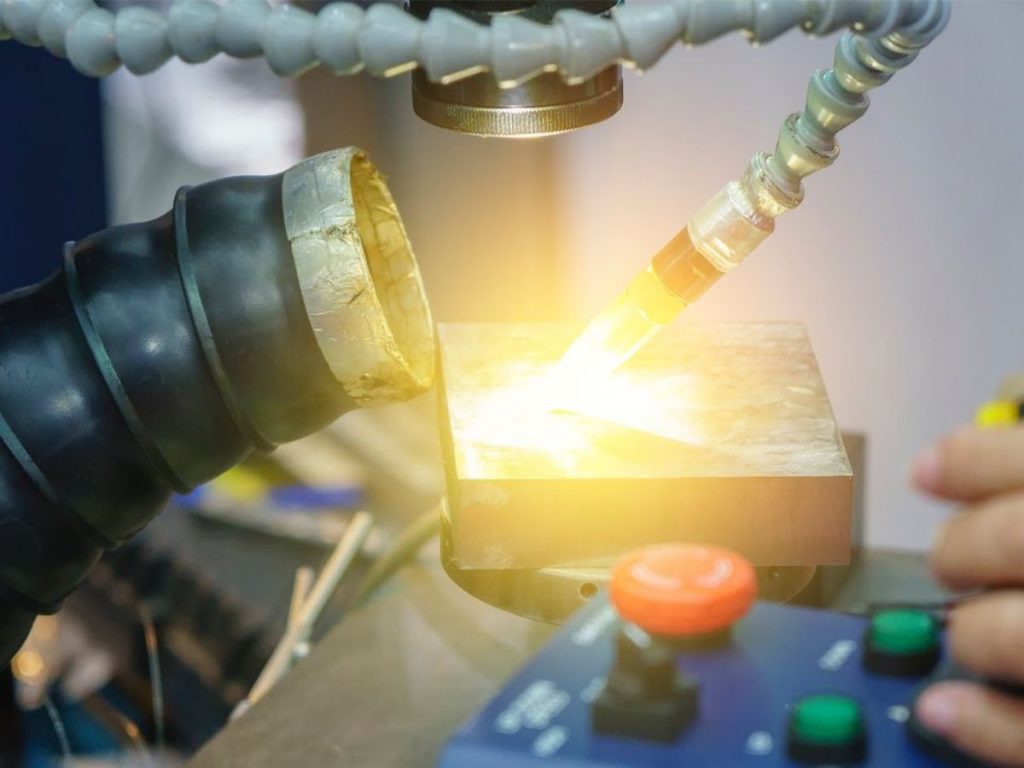What exactly is laser beam welding, and how does it work?
Laser Beam Welding (LBW), sometimes known as Laser Welding, is a radiant energy welding technology that unites materials by focusing a laser beam on the surfaces to be connected. It does not require a vacuum, unlike electron beam welding.
The laser focuses light waves into a narrowly defined, very concentrated beam that can impart enormous energy on a tiny region, resulting in strong fusion for welding. Additionally, the precision of the laser beam allows for very accurate and controlled welding, leading to higher quality and consistency in the welds. Many industries are also exploring the potential of improving welding visualization with audio, as a way to enhance the monitoring and control of the welding process. This could lead to even greater efficiency and accuracy in the use of lasers for welding applications.
Common light waves are incoherent, with varying durations and frequency that scatter in all directions. In contrast, a laser beam is a coherent light, which means that the waves are similar and parallel.
How Does Laser Welding Work?
The Ruby Crystal
A man-made cylindrical Ruby crystal generates the laser beam. Ruby is made of aluminum oxide with chromium scattered throughout, making up roughly 1/2000 of the crystal, which is less than a natural ruby. The crystal’s ends are silvered to make internal mirrors, and one end has a small hole in the silver layer through which the laser beam emerges.
Xenon Light Tube
A flash tube carrying the inert gas xenon is put around the exterior of the crystal. The flash tube is intended to transform electrical energy into light energy at a rate of thousands of flashes per second.
Bank of Capacitors
The capacitor bank is used to store electrical energy. A high voltage power source charges it. It powers on the flash tube through a triggering mechanism.
System of Cooling
A cooling system is necessary because the majority of the power output of a laser source is lost as heat. There is usage of both gas and liquid cooling, with liquid being more frequent.
Cavity of Light
The optical reflector cavity of the laser welding equipment reflects and concentrates high-intensity radiation from the flash lamps onto the ruby (crystal) rod.
Step 1: When exposed to an electrical discharge from the capacitors, xenon converts a large part of the energy into white light bursts. The flash lasts around 1/1000 second.
Step 2: As the ruby is subjected to the powerful light flashes, the crystal’s chromium atoms are energized and pushed to a high energy level. With the development of heat, these chromium atoms quickly drop to an intermediate energy level, and finally drop back to their initial state with the evolution of a discrete amount of radiation in the form of red fluorescent light.
Step 3: When one excited atom’s red light collides with another excited atom’s red light, the second atom emits red light that is in phase with the collision red light wave. In other words, the original atom’s red light is magnified because additional red light identical to it is generated.
The effect is accentuated by mirroring the parallel ends of the ruby rod, so that the red light created bounces back and forth down the length of the crystal.
Step 4: The chain reaction collisions between waves of fluorescent red light and chromium atoms grow so numerous that the total energy eventually bursts beyond a threshold and exits as the laser beam from the tiny hole in the mirror at one end of the ruby crystal.
Step 5: An optical focusing lens focuses this narrow laser beam to create a tiny concentrated point of laser (light) on the work. When optical energy strikes a workpiece, it is transformed into heat energy. The temperatures produced may be high enough to melt (and evaporate) the materials being welded or sliced.
In a couple of microseconds, the little puddle melts and freezes. Because this period is so brief, no chemical interaction between the molten metal and the environment occurs, and hence no air contamination prevention (shielding, etc.) is required in laser welding.
Laser Beam Welding Applications
- Used extensively in the automotive and aerospace industries.
- In the electronic industry, connecting leads on tiny electronic components and in integrated circuits.
- To weld polyurethane-insulated lead wires without losing the insulation. The laser evaporates the insulator and completes the weld.
- (To combine hard metal alloys with high melting points.)
- With a smaller portable laser welding system, laser welding is employed in the jewelry and medical sectors.
Advantages of Laser Welding
- Welding is possible with a broad range of materials, including several that were previously thought to be unweldable. The substance being welded does not have to be an electrical conductor.
- Because no electrode is utilized, there is no risk of electrode contamination or high electric current effects.
- It allows for the joining of tiny, closely spaced components using welds as small as a few microns in diameter. it can be focussed to tiny dimensions and directed with tremendous precision.
- Surface contaminants such as oxides and organic materials have little, if any, effect on weld quality.
- In contrast to electron beam welding, no vacuum is needed.
- Because the laser beam is highly focused and precisely defined, the heat impacted zone is small.
- Heat treated alloys may be welded without altering their heat-treated state.
- High production rates may be achieved by automation.
Laser Beam Welding Disadvantages
- The cost of equipment and qualified operators is too expensive.
- Materials like magnesium evaporate and leave large surface gaps.
- The weld depth is limited.

